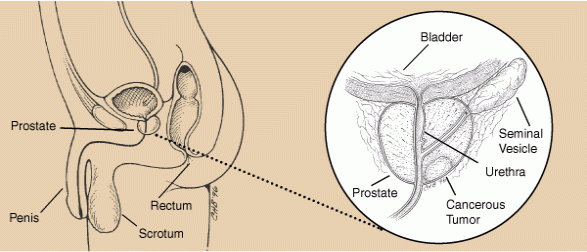New laser treatment targets prostate enlargement

A new laser treatment for men suffering from an enlarged prostate that could reduce trauma and with faster recovery time is now available.
Prostate enlargement, also known as Benign Prostatic Hyperplasia (BPH) is among the most prevalent health problems for men in Australia. The condition occurs when the prostate expands and places pressure on the urethra, which leads to urination and bladder problems.
A new laser treatment, called Pulse 1-20, evaporates the enlarged prostate tissue to increase the urine flow from the bladder through the urethra, according to 9news. The procedure is quick and relatively painless.
The treatment will become increasingly accessible to Australian patients, Dr Raji Kooner of St. Vincent’s Private Hospital in Sydney told 9news. “For patients it is a game changer. It’s important I think for patients to be made aware of it,” he said.
Currently, prostate enlargement is treated by surgically removing part of the prostate gland surrounding and constricting the urethra. In the procedure called transurethral resection of the prostate (TURP), an instrument is inserted up the urethra to remove the section of the prostate that is blocking urine flow.
TURP is done using a general or spinal anesthetic and usually requires hospital stay for one to two days. Patients who have undergone the procedure are advised to avoid strenuous activity for about four to six weeks.
According to Urological Society of Australia and New Zealand, the prostate is a small but important gland in the male reproductive system, about the size of a walnut. It grows as a man ages, doubling in size between the ages of 21 and 50 years and again between 50 and 80 years.
BPH, a common occurrence among men, starts after the age of 40, with the incidence increasing in around half of all men by age 50. Since the condition affects the part of the prostate that surrounds the top part of the urethra, its symptoms can include an urgent feeling of needing to urinate, urinating frequently and painful urination.
While BPH is not life-threatening, its symptoms should not be ignored because there is a chance that they are an indication of a more serious condition. If left untreated, prostate enlargement can lead to bladder blockages and various kidney problems.
Men should also make lifestyle changes that may help reduce the symptoms of BPH, according to the Urological Society of Australia and New Zealand. This includes reducing caffeine and alcohol consumption to avoid irritating the bladder. Men should also watch their weight as well as diet to avoid constipation and subsequent strain on pelvic floor muscles.
Contact the writer at feedback@ibtimes.com.au or tell us what you think below.






